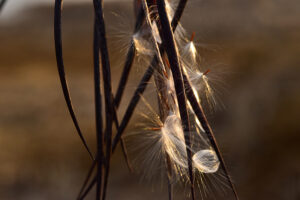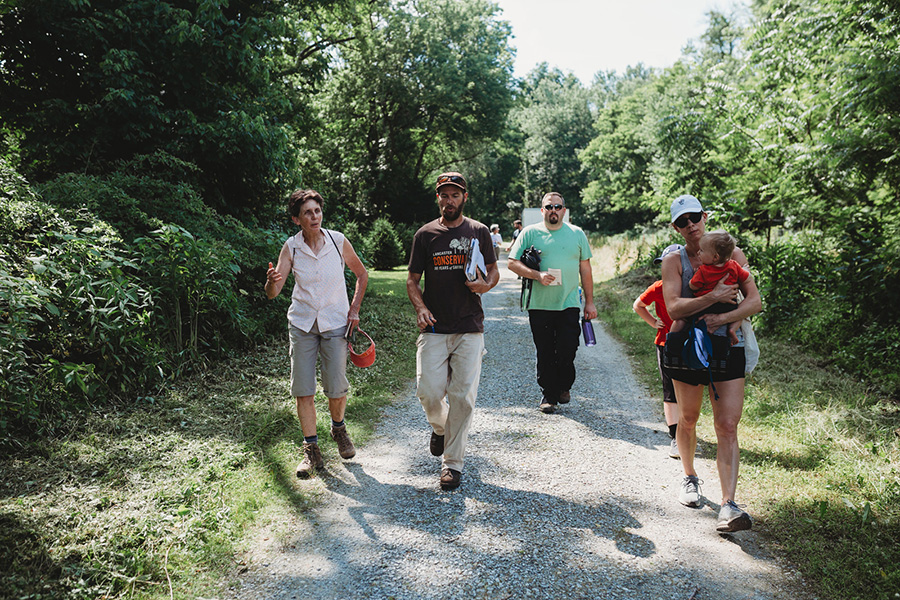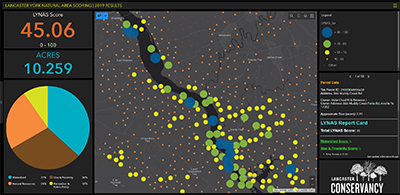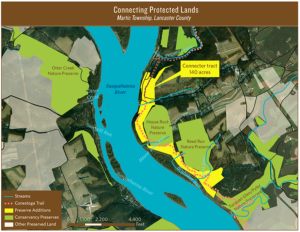You will often hear the Conservancy speak about “connections” – the connection of people to the environment and the land, the connection of our mental, physical, and emotional health to time spent outdoors, the connections of the trails between one preserve and another. The other connections our work focuses on is the goal of acquiring “connector pieces” of land – the parcels of land that connect one protected piece to another. Purchasing and protecting these connector pieces is a priority of the Conservancy because of the numerous benefits they provide to both the ecosystem and community.
Why are these connector pieces so important?
- Mitigating the impacts of climate change: As the planet continues to experience the effect of global climate change, organisms are forced to shift their geographic ranges. This “climate connectivity”, or the availability of connected pieces of natural lands to assist affected organisms in adapting to the new realities of a changing climate, is a major driver in our goal to purchase more connector pieces.
- Migration/dispersal corridors: A variety of species require corridors to migrate through for both long-distance
 journeys – such as the seasonal migration we see in many bird species – and shorter dispersion as part of their normal life history (think plant seeds blowing in the wind). Compounding this are the species that require other species to disperse, examples being seeds that birds eat and excrete elsewhere, or seeds that attach to the coat of a deer and are deposited somewhere nearby. Habitat connections not only facilitate the migration and dispersal of target species, but they give more opportunities for interaction with those species that help disperse the target.
journeys – such as the seasonal migration we see in many bird species – and shorter dispersion as part of their normal life history (think plant seeds blowing in the wind). Compounding this are the species that require other species to disperse, examples being seeds that birds eat and excrete elsewhere, or seeds that attach to the coat of a deer and are deposited somewhere nearby. Habitat connections not only facilitate the migration and dispersal of target species, but they give more opportunities for interaction with those species that help disperse the target. - Recreation: If we don’t protect the land through which a trail travels, the trail is in jeopardy. Even if the trail is owned or under easement by a conservation/recreation organization and technically protected, if the land on either side of the trail is developed, the trail experience is forever changed.
- Viewshed: Just like the experience of trail users, visitors to preserves want to be rewarded with a beautiful view after a long hike. Several Conservancy preserves have iconic viewsheds (Pinnacle, House Rock, etc.), and so the Conservancy actively targets the properties that make up these viewsheds so that these awesome experiences are preserved for generations to come.
- Increasing access: Many properties the Conservancy acquires have limited access because of their rural, undeveloped
 nature. These properties may have topographic or water features that prevent the implementation of parking and access infrastructure. The Conservancy often purchases an adjacent connector property with the intention of providing access in the future. We work closely with neighbors and township leadership in these instances to ensure a sound planning process.
nature. These properties may have topographic or water features that prevent the implementation of parking and access infrastructure. The Conservancy often purchases an adjacent connector property with the intention of providing access in the future. We work closely with neighbors and township leadership in these instances to ensure a sound planning process. - To buffer existing, high-quality preserved land from disturbance: Human presence and the inevitable habitat disturbance it brings negatively impacts water quality and invites invasive species to natural areas. These species outcompete native species and can form a monoculture, eliminating biodiversity and disrupting the natural ecosystem processes that keep our landscape functioning. Erosion and pollution from development and use of adjacent properties harms water quality and the sensitive species that call streams and wetlands home. Even if we preserve the best habitats in the area, if development pressure moves too close, the preserved land will be compromised. Preserving lower quality buffers to high quality habitat gives us the opportunity to not only prevent disturbance of nearby preserved lands but also to restore these lower quality properties.
How do we identify them and prioritize these connector pieces?
In 2019 the Conservancy completed a significant update to our ranking system used to prioritize conservation efforts in Lancaster and York Counties. Called the Lancaster-York Natural Areas Scoring (LYNAS) model, this Geographic Information System (GIS) based tool gives every property in our region a conservation score from 0-100. It scores properties based on the three tenets of our mission:
Lancaster and York Counties. Called the Lancaster-York Natural Areas Scoring (LYNAS) model, this Geographic Information System (GIS) based tool gives every property in our region a conservation score from 0-100. It scores properties based on the three tenets of our mission:
- Land: What is the habitat quality on this property? Does it provide habitat for a diverse array of species? Is there evidence that sensitive, rare, or threatened species live on the property? This is also where we assign points to properties that connect to other preserved areas, whether they are owned by the Conservancy or another partner in conservation.
- Water: Is the property located in a high-quality watershed where we need to work to preserve current conditions? Does the property have a water feature (a stream or wetland) on it?
- Community: Is the property located within a priority landscape (Susquehanna Riverlands or PA Highlands)? Does it connect to any local long-distance trails?
Each project we review is analyzed first through the LYNAS model. If the property ranks high enough we do more studies, including site visits, to assess on the ground conditions.
What is an example of a recent acquisition that is a connector piece?
 Pequea tract case study: connecting several Conservancy properties
Pequea tract case study: connecting several Conservancy properties
- Brookfield Renewable donated this 140-acre property to the Conservancy in 2020 as part of the last phase of the PPL Project.
- This an excellent example of a connector tract, as it connects four other nature preserves (Pequea, House Rock, Reed Run, and Tucquan Glen & Pyfer Nature Preserves), allowing alternative access points to these popular preserves.
- It contains over a mile of the Conestoga Trail and allows the Conservancy to connect trails from other preserves. This segment of the Conestoga Trail is very scenic, with stream crossings and views of the Susquehanna River.
- It protects segments of four different streams as they empty into the Susquehanna River.
- It protects the viewshed from the river.
Your Support is Needed Now!
Give a gift between Earth Day & Arbor Day
Your Lancaster Conservancy membership connects you to a community of fellow hikers, naturalists, anglers, hunters, scientists, and families that understand the value of keeping our lands wild and our trails open. Give a gift between Earth Day (April 22) and Arbor Day (April 30) to help raise the $40,000 needed to expand and steward our network of trails and nature preserves that are vital for our community and nature to thrive.
DONATE NOW
Your gift ensures both current and future generations will benefit from the land we save, the trails we create, and the habitat we restore.
